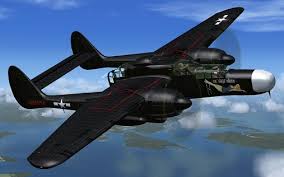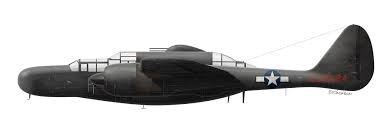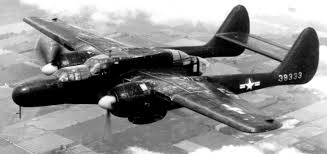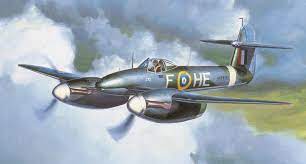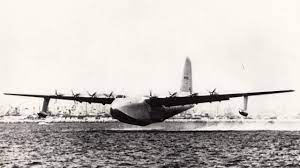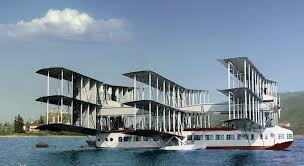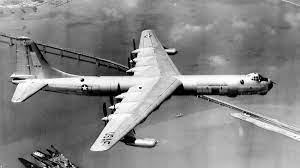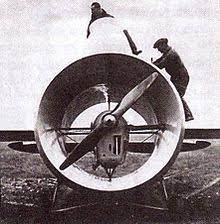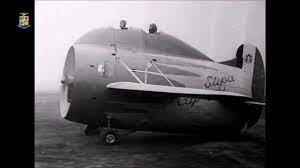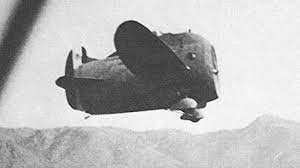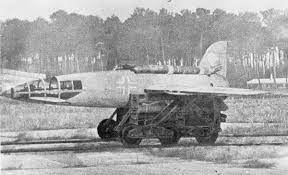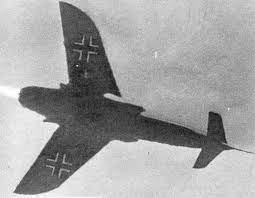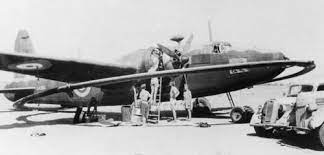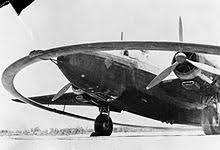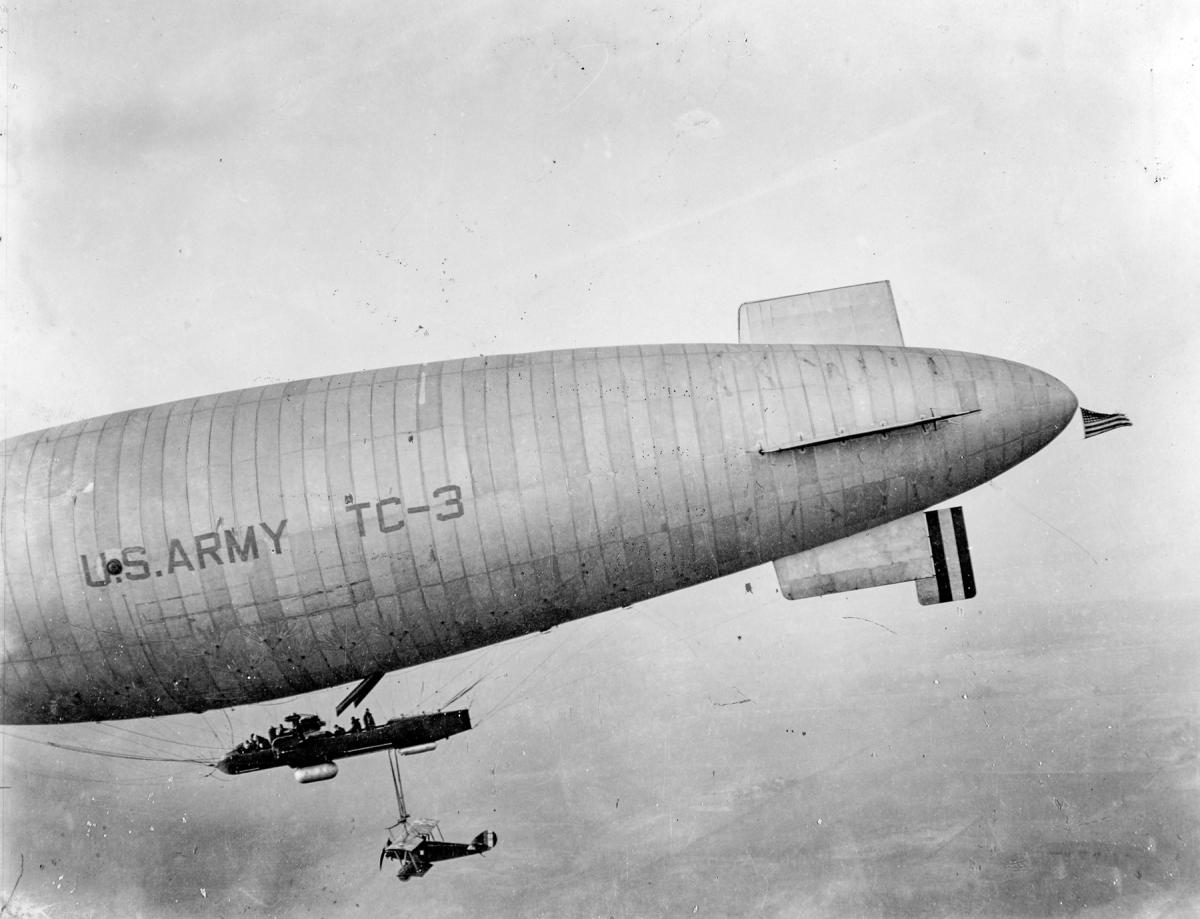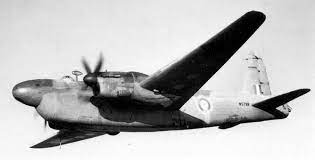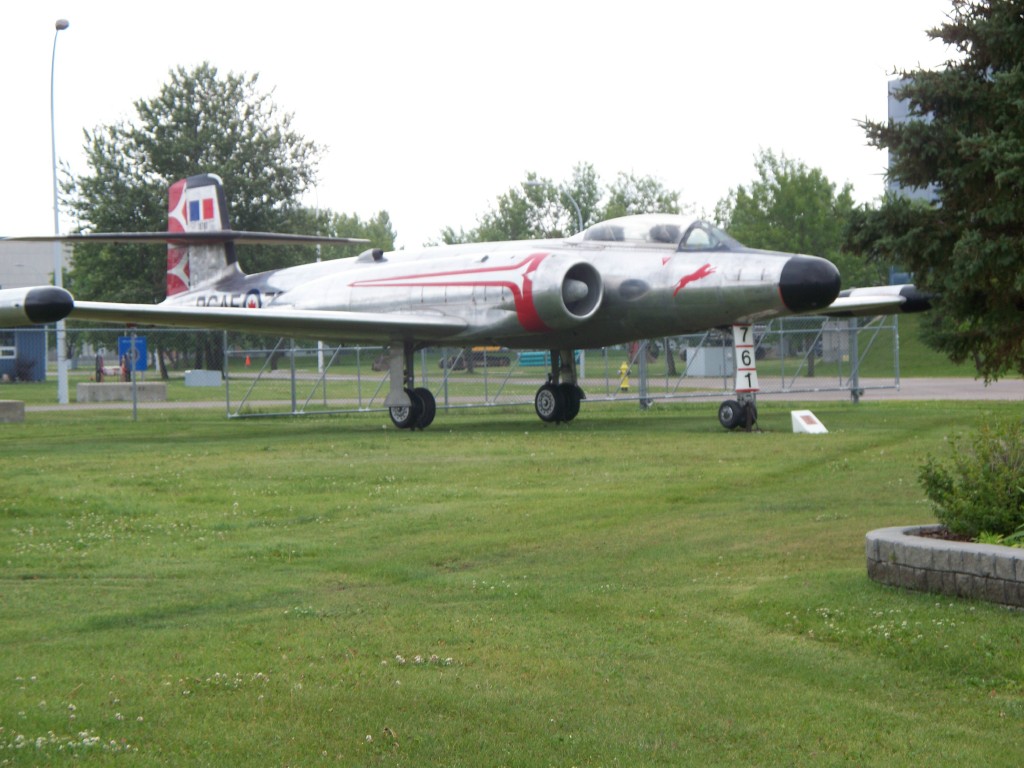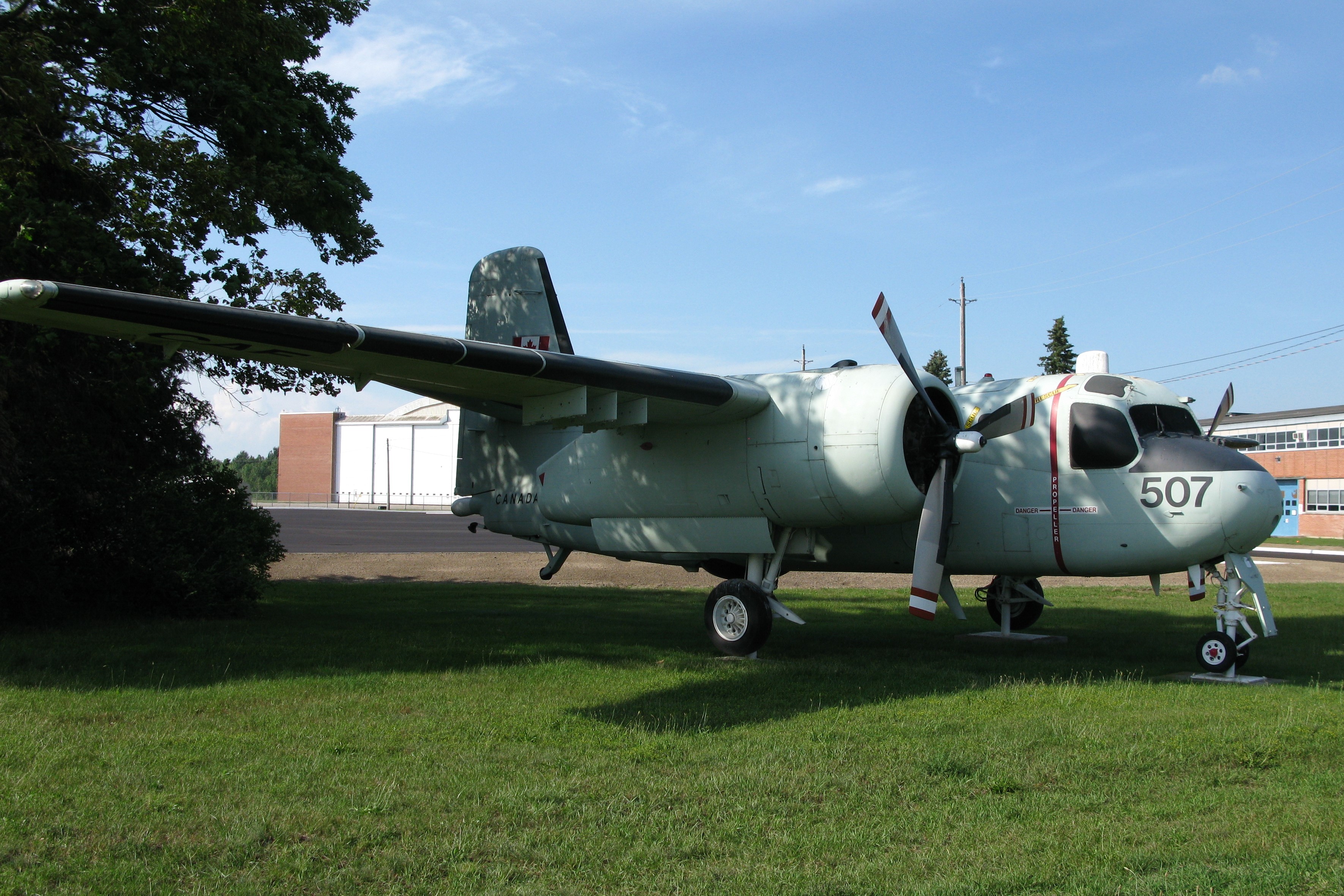
|
| Title: Rare and unusual aircraft | |
| Generalhistory > General > General Discussion | Go to subcategory: |
| Author | Content |
|
majorshrapnel
|
|
|
Date Posted:2023-03-10 01:20:03Copy HTML The BritishTSR2. This superb, highly advanced strike and reconnaissance aircraft is known in aviation circles as the plane that was shot down by its own government, as it never saw service or action. It was and still is, surrounded by mystery, conspiracy and conjecture. It was given a remarkable specification at birth, all of which were achieved and more. For a start it had to gain flight in under 600 yards and reach Mach 1.1 at ground level (200ft max) and Mach 2.2 at medium to high altitude, carry a nuclear bomb to Russia, dogfight with the best and remember we are dealing with an aircraft conceived in the 50's. It would have both front and side seeking radar and its Bristol Siddeley engines would later be fitted to the Concorde but only after the TSR2 had sorted its many faults out.The British aircraft industry had come out of WW2 as one of the very best, innovative designers and builders and with a nuclear Soviet Union to tend to the west needed such a high specification aircraft. The problem with the industry though was that we had no war to feed it and with an almost bankrupt nation it had too many companies chasing too few contracts, which led to a poison atmosphere in the industry and its various manufacturers, all stoked by political favouritism. The answer was the amalgamation of them to form BAC the British Aircraft Corporation and it was this company that would build the TSR2, all be it around the country, which became its first fault. Before it had been laid fully out it suffered political interference and design tampering, all of which began to raise the time and cost of it. Eventually it took to the air and it was spectacular and no exaggeration to say it was the finest aircraft on earth. Unfortunately it had just too many enemies, both at home and abroad, most notably the US with its rival F111. At home there was Louis Mountbatten a devoted navy man who wanted money for the Royal Navy. The RAF had 126 aircraft on order and the first overseas order was 30 for Australia but then we sent its biggest enemy to Australia in Mountbatten who then did his best to scupper the deal. In 1964 the Labour govt under Wilson came to power and the new PM visited the US to meet Johnson, a President who had been putting pressure on the Aussies to cancel their order and buy the F111 at a rock bottom price, ie under cost and between them they had the order cancelled with no objection from Wilson, who was after US loans and feared they would scupper his plans to borrow money from the IMF. Attacked from both sides the project was suddenly cancelled but not only was it cancelled but the political order went out that all built airframes, machines and tooling was to be destroyed and it was, including a wooden mock up, so that there would be no chance of another change of mind. The only change of mind was that we then bought 50 F111's from the Yanks. The govt wouldn't even allow the manufacturers to keep one for research, not one, it had to go, lock, stock and barrel and were even used as target practice. However, two in various states of finish were kept aside and they do survive and are on show at RAF Duxford museum. |
|
|
majorshrapnel
|
Share to:





 #26
#26
|
|
Re:Rare and unusual aircraft Date Posted:2023-03-15 02:04:45Copy HTML Fairchild's was founded in 1924 and built some very successful aircraft, the PT19 trainer being its most successful, numbers wise, selling well over 6,000. They also built over 1800 of the very successful Boxcar, a brilliant transport plane, which set the standard. Then there was helicopters, jet airliners, turboprop airliners. Then there's the C82 transport and if you've ever seen the fantastic film The Flight of the Phoenix, that was theirs. Then there were flying boats and even work on the space shuttle. As for Thunderbird 2, the Packplane above, as mentioned the plane became unstable without its pod and frightened the test pilot shitless at times but there were many other faults but none you could place on the terminal list. It's just not like the Yanks to throw in the towel so soon, that's all, especially on such a great concept. They didn't get to the moon with that attitude. |
|
|
pbandrew3rd
|
Share to:





 #27
#27
|
|
Re:Rare and unusual aircraft Date Posted:2023-03-15 05:55:02Copy HTML Fairchild's was founded in 1924 and built some very successful aircraft, the PT19 trainer being its most successful, numbers wise, selling well over 6,000. They also built over 1800 of the very successful Boxcar, a brilliant transport plane, which set the standard. Then there was helicopters, jet airliners, turboprop airliners. Then there's the C82 transport and if you've ever seen the fantastic film The Flight of the Phoenix, that was theirs. Then there were flying boats and even work on the space shuttle. As for Thunderbird 2, the Packplane above, as mentioned the plane became unstable without its pod and frightened the test pilot shitless at times but there were many other faults but none you could place on the terminal list. It's just not like the Yanks to throw in the towel so soon, that's all, especially on such a great concept. They didn't get to the moon with that attitude. Both made by Avro Canada
|
|
|
pbandrew3rd
|
Share to:





 #28
#28
|
|
Re:Rare and unusual aircraft Date Posted:2023-03-15 05:56:40Copy HTML VZ-9
|
|
|
majorshrapnel
|
Share to:





 #29
#29
|
|
Re:Rare and unusual aircraft Date Posted:2023-03-16 12:49:35Copy HTML AVRO is the abbreviation for A.V. Roe the A.V. standing for Alliot Verdon Roe. His factory was within spitting distance of where my dad grew up. My uncle worked at AVRO's at Woodford and we visited the factory every year on family day. Alliot was nothing short of an engineering genius and flight pioneer. His list of aircraft is a who's who and what's what of the British aircraft industry. |
|
|
majorshrapnel
|
Share to:





 #30
#30
|
|
Re:Rare and unusual aircraft Date Posted:2023-03-17 09:55:35Copy HTML
This is the wonderfully named P61 Black Widow night fighter, designed by Northrop in 1941 with the collaboration of the R.A.F. It would not become active until the last few years of the war. It's a very distinctive aircraft but you ask the next 100 people have they ever heard of it and 99 will say no. Amongst its firsts, it was the first aircraft fitted with onboard radar and its famous last was to claim the last aircraft kill of the war. It was the aircraft that would advance Northrop from a parts maker for other aircraft companies into a pukka design and manufacturer in its own right. The plane carried a crew of three, a pilot, a gunner and the newest member of the age, a radar engineer. It was a large aircraft with a large degree of firepower having four machine guns both front and rear. It got its name from its all black gloss finish which you think would make it light up more than mat in the beam of a searchlight but it didn't. It served in the Pacific from 44, where it would claim that last kill of the war. |
|
|
majorshrapnel
|
Share to:





 #31
#31
|
|
Re:Rare and unusual aircraft Date Posted:2023-03-21 10:49:56Copy HTML
This is the one that got away, the world war two Westland Whirlwind. Whilst the Spitfire, Hurricane, Mosquito, Typhoon and Tempest bath in eternal glory, this aircraft remains almost unknown, despite it's revolutionary design. Whilst the Hurricane and Spits were great fighters they were very short range fighters and in the view of many, under gunned having .303 caliber machine guns. The air ministry required a longer range fighter armed with cannon. Did you know the Spits were only capable of five- three second bursts before they ran out of ammunition? They shifted an awful lot of lead in that time though. In the mid 30's the ministry put out its specification for a new fighter and two years later the Westland company took the contract. The company then was led by an almost unheard of genius now, William Willoughby Petter, who has a string of famous aircraft to his name including the brilliant Lysander and the magical Canberra bomber and you can throw in the Lightening too. The Whirlwind was a very advanced design for its time and amongst its 'firsts' was a bubble canopy. It also had a prestressed metal skin. Before the first aircraft flew the company decided to change the engines from the Kestral, to the more modern Peregrine. Now, for my money they should have just got one aircraft up and flying first, then gone ahead. Admittedly the Rolls Kestrel was a ten year old design but the Peregrine was actually an updated Kestrel but none the less, even though the Kestrel was outdated and underpowered, they could have done an awful lot of testing in-between time with an aircraft to play with. This decision resulted in a damaging delay. It claimed its first kill in 1941with canon that could unload an eye watering 600lb of explosive shells per minute, the most of any aircraft in the world at that time but they were prone to jamming. Its long range capability was the best in the world too so they were put to shipping and ground attacks but it had disappointing shortfalls, manoeuvering capability was less than expected and the Rolls Peregrine was underpowered, poor at high altitude and unusually for a Rolls engine, unreliable. Why they never switched to the Merlin I don't know but I suspect the Lancaster was now soaking them all up, as well as the Spits and Hurricanes. Only 146 were ever produced and as they lacked sufficient fighter capability half of them were converted to low level bombers, being able to carry two 500lb bombs and attracted the nickname Whirlybombers. In this guise they were very successful, wrecking roads, bridges, trains and anything else that moved over France. However, the arrival now of the new Typhoons and Tempests sounded their death knell and they were taken out of service. |
|
|
majorshrapnel
|
Share to:





 #32
#32
|
|
Re:Rare and unusual aircraft Date Posted:2023-03-23 10:03:03Copy HTML Tricky question for you..... how do you turn birch into spruce? Answer, you make a plane out of it and call it a goose, a spruce goose. Yep, the spruce goose was actually made of birch. Everything about this monster was monstrous, for a start its wingspan was twice the length of the Wright brothers first flight. Built to be a cargo carrier it was considered for a passenger plane, a plane that could carry 700 people, I mean, that's two village's full but its purpose was as a WW2 pacific submarine hunter and cargo transporter. Its real name was the H4 Hercules and is the largest wooden plane ever built, or will ever be built. When wooden seaplanes get beyond a certain size they always throw up problems which leads to their inevitable demise. The Brits had the gigantic Saunders Row Princess and just like the Spruce Goose, three were made, or half made and only one of each got to fly. Its sugar daddy was the fabulously wealthy and somewhat eccentric Howard Hughes, a man who had a knack of rubbing up politicians the wrong way and we all know what a bunch of vindictive bastards they can be. They tried to have the project cancelled but Roosevelt decided to make just one. It was plagued with problems, shortages of materials and skilled men, political vindictiveness and claims of corruption. If you see Hughes before the plane was built and after it was built it aged him 15 years. Many thought it would never fly and I don't blame them but it was Hughes himself who would sit in the driver's seat for a preliminary taxi run down the bay but as she hit 90, up she went. Did Hughes mean to? Of course he did, he was going to prove all those doubters wrong and he did, just the once, for this magnificently eccentric beauty never flew again but thankfully was saved and is in dry dock for generations to stand open mouthed at its majesty. |
|
|
majorshrapnel
|
Share to:





 #33
#33
|
|
Re:Rare and unusual aircraft Date Posted:2023-03-23 10:06:43Copy HTML
That wingspan is longer than an American football pitch. |
|
|
majorshrapnel
|
Share to:





 #34
#34
|
|
Re:Rare and unusual aircraft Date Posted:2023-03-28 01:10:07Copy HTML
If ever there was a man who thought big, it was Giovanni Caproni, whose company produced a staggering 162 different models in just 48 years. The Italian aircraft industry has been one of the most prolific in history and produced some remarkable models, probably none more so the the Caproni CA60. A seaplane built in the early 20's, when he believed that if you could stick enough wings and engines on, you could flay a block of flats. He had the idea to build a plane that could carry at least100 passengers with the aid of a paltry nine wings and eight engines. Why make it a seaplane? Because there were very few airports in those days but lots of lakes. It may look a little Heath Robinson and strung together with boards and goalposts but technically it was quite brilliant. It was powered by 8 American V12 engines of 21,000 CC's. The cabin looked like it was from the back of a train and within it was only what could be described as two rows of park benches. The wingspan was 33 yards. On its first test they found the front lifted too soon, causing water to seep into the rear, so they had to load it with ballast, adding extra weight of course but it was still to cause problems. On its first flight it managed to get airborne and land but on its second flight the front rose too sharply once again and in trying to get it down so as to avoid a stall, the plane lost lift and plunged into the lake, making quite a mess of it. It never flew again. |
|
|
MarkUK
|
Share to:





 #35
#35
|
|
Re:Rare and unusual aircraft Date Posted:2023-03-28 01:59:18Copy HTML That is a ridiculous looking thing. You're playing chess with Fate and Fate's winning.
Arnold Bennett
|
|
|
majorshrapnel
|
Share to:





 #36
#36
|
|
Re:Rare and unusual aircraft Date Posted:2023-03-30 09:28:20Copy HTML I know the Boeing B52 bomber is not a strange aircraft but it is unusual in the fact that it has been in continual service for 70 years, absolutely astonishing. The B52 has always been one off my all time favourite aircraft because of its venomous beauty, its slender form and elegant design. Its nickname to those at Boeing is the Buff, which stands for Big Ugly Fat Fucker but I think it's anything but fat. It truly is a masterful piece of aerodynamics and now you can add record breaking longevity. This phenomena has a range of 8000 miles and can carry 70,000lb's of bombs. Now, this old grandaddy is about to get a shot of aeronautical viagra with the introduction of Rolls Royce F130 engines. They replace the old Pratt and Witney engines, which have served them so well and will give it the power to take it onwards into a new era. The engines will be built under licence in the States and if you get to see the latest model the engines have the large Rolls Royce logo with the words .... 'American made jet engines' next to it. Why change them? Because the old engines cost $70,000 per hour to fly due to their maintenance costs. The new engines will pay for themselves in time. |
|
|
majorshrapnel
|
Share to:





 #37
#37
|
|
Re:Rare and unusual aircraft Date Posted:2023-03-30 09:32:44Copy HTML
This is the B36, the predecessor of the B52, talk about a quantum leap! |
|
|
tommytalldog
|
Share to:





 #38
#38
|
|
Re:Rare and unusual aircraft Date Posted:2023-03-30 12:07:07Copy HTML My car-partner from my PD days had a cabin in the Adirondacks near Plattsburgh N.Y. where B-52's were based. We spent some time hunting & fishing up there years ago & the B-52's coming & going was always an awesome experience. Just the sound alone was marvelous. |
|
|
tommytalldog
|
Share to:





 #39
#39
|
|
Re:Rare and unusual aircraft Date Posted:2023-03-30 12:12:26Copy HTML
This is the B36, the predecessor of the B52, talk about a quantum leap! The B-36 Peacemaker was a long distance champ which counter-balanced the Russian missile advantage during the early days of the Cold War. She was unusual for her hear mounted engines. |
|
|
majorshrapnel
|
Share to:





 #40
#40
|
|
Re:Rare and unusual aircraft Date Posted:2023-03-31 12:43:42Copy HTML
You do get the feeling that the designer of this airplane liked basking sharks. This amazing craft is the 1932 Caproni Stipa, yep, built by the same brilliant man who built the flying train waggon above but it wasn't designed by him, that dubious honour went to aeronautical engineer Luigi Stipa. Naturally it was called the flying barrel but it had some very clever attributes, one being that it worked by sucking air through a cylinder, much like a modern turbo fan does. Also, Stipa understood that if you drive air through a tapered tube it increases its velocity, thus giving more thrust and that thrust was delivered by a British engine built by De Havilland. Surprisingly it had a better climb rate than most aircraft of the day and was a very stable craft which did 80mph. Being only an experimental aircraft no others were built but Stipa did patent it's design, which was copied by others including the Germans but to no end. However, the Italians did build another similar principled aircraft which was longer and more streamlined and powered by a radial engine but to achieve the extra thrust necessary they added compressed fuel and air into the exhaust thus creating the first afterburner, an essential requirement of all modern fighters. Stipa died in 1992 and his flying barrel was recreated in Australia and did fly. It now sits in a museum as a tribute to Stipa. |
|
|
majorshrapnel
|
Share to:





 #41
#41
|
|
Re:Rare and unusual aircraft Date Posted:2023-03-31 12:50:52Copy HTML VZ-9
This was not built by Avro's Pete, it was designed and built by Austrian engineer Victor Schauburger |
|
|
majorshrapnel
|
Share to:





 #42
#42
|
|
Re:Rare and unusual aircraft Date Posted:2023-04-04 08:20:31Copy HTML
The German's were responsible for some remarkable aircraft in WW2 and none more so than this spectacular failure the KLF255. The thought was there but not the time to perfect it. Late in the war German airfields were being pounded daily and if it moved, it was a target. To combat this an engineer called Klaggen came up with this solution, a rocket powered Flash Gordon style vision of the future. The idea was for it to run on rail tracks, mounted on a trolly and when it hit the right speed it would leave the trolly and intercept allied bombers. The beauty of this was that it only needed 500 yards of track and was built and stored out of sight in an underground facility. Beside its main engine it carried two auxiliary rockets mounted on the upper fuselage, which you can see on the first pic and because of its extraordinary design the pilot would have to fly it in the prone position in a pressurised cockpit. Fortunate enough to have the contacts to get to Himmler and through him Hitler, the project got the go ahead. The body was made of aluminium and the wings of wood and fabric, which made it quicker to build. On completion of the first aircraft a pilot was chosen and a gathering of the SS and others attended its maiden flight. It managed to leave its trolly and gain flight but as the pilot fired its auxiliary rockets things went badly wrong and it fell out of the sky, killing the pilot. That was the end of the project but imagine if it would have appeared a year or two earlier? |
|
|
majorshrapnel
|
Share to:





 #43
#43
|
|
Re:Rare and unusual aircraft Date Posted:2023-04-08 10:35:20Copy HTML
I give you, the flying doughnut, the Vickers Wellington DW1. No other aircraft in WW2 had more variations than the Wellington and it's hard to think of a more resilient workhorse. Did you know that it was also the most produced British bomber of the war. As you can deduce the circular structure was a form of signal device. It was built for the specific purpose of mine detection and detonation. Shipping losses in British coastal waters cleared of mines began to rise and the reason was a new magnetic mine, one that didn't need to float on the surface, it just sat on the bottom waiting for a steel hull to pass over, which triggered the magnetic detonator. Losses soon became critical and thus needed a rapid solution. Fortunately a mine was washed up onto the mud flats of the Thames estuary, recovered and dissected for its secrets. The first solution was to degauss the hulls of shipping, which stopped their magnetic signal but this was too complicated for so many vessels at the time. The next idea was to trigger them using a low flying aircraft but the problem was, they could give off a strong enough signal, so they approached Vickers to construct a craft that could do that, so to do that it was fitted with a generator, powered by a Ford V8 engine charging a aluminium coil that would create a magnetic field strong enough to trigger the mines and hope it didn't take the plane with it. It was reasonably successful but needed more power, so they replaced the V8 with a Dehavilland Gypsy engine, which could then run a more powerful generator which improved the signal by 300%. They were quite successful for a short time, both in British coastal waters and later in the Med before a successful degaussing method was developed for shipping. |
|
|
tommytalldog
|
Share to:





 #44
#44
|
|
Re:Rare and unusual aircraft Date Posted:2023-04-08 12:58:50Copy HTML Lawrence Sperry was one of the first licensed pilots in America. His license number was 11. He & his father invented many things common in aviation & other travel industries. One is the autopilot another is the gyroscope. But there is another more interesting tale to tell about Lawrence. In November of 1916, Lawrence who was a ladies man, was giving a flying lesson to a wealthy N.Y. socialite named Mrs. Waldo Polk. At the time Mrs. Polk's husband was dutifully supporting WWI by driving ambulances in France. Meanwhile back on the home front, Mrs. Polk was learning how to fly with playboy stud Lawrence Sperry when the Curtiss flying boat they were in crashed into south bay. They both survived & the duck hunters who found them in the rubble reported they were both naked. Sperry claimed the force of the crash is what caused them to lose their clothes, but Sperry is credited with founding the Mile High Club.
Sperry died at the age of 31 after his plane crashed in the English Channel. He had 23 patents to his name at the time of his death. Pilots began calling their autopilots "George" during WWII. This in reference to their planes symbolically belonging to King George VI. |
|
|
MarkUK
|
Share to:





 #45
#45
|
|
Re:Rare and unusual aircraft Date Posted:2023-04-09 07:50:09Copy HTML A Sperry M-1 was the first aeroplane to attach and disengage itself to/from an airship in flight. Sperry himself designed the tiny aeroplane for the purpose but never lived to see it happen, he was killed in December 1923. In October 1924 a Sperry M-1 was carried aloft by the Army non-rigid TC5 at Dayton OH, it was released and landed safely. In December the same aircraft took off from Scott Field, St Louis and successfully hooked on to the non-rigid TC3 in the air.
You're playing chess with Fate and Fate's winning.
Arnold Bennett
|
|
|
majorshrapnel
|
Share to:





 #46
#46
|
|
Re:Rare and unusual aircraft Date Posted:2023-04-09 11:17:56Copy HTML
This is the MK5 Wellington, which looks like a sperm whale. It was conceived for very high altitude flying, thus avoiding flak. The bulbous nose is actually a pressurised, very claustrophobic cabin which carried a crew of three, which did not include any gunners as it was considered to fly too high for fighters. On the top the pilot looked out of a bubble canopy not much bigger than his head, a seating position which made it visibly very difficult to land The Mk5 was powered by a Bristol Hercules radial engine, which was found to dislike very high altitudes so was exchanged for a Rolls Merlin and then became the MK6, adding an extra crew member and 14ft to the wingspan. On testing its various faults were exposed, the first being the misting up of the canopy, which turned to ice at that height, blanking out the pilot's view and frozen grease amongst many. Despite the mounting problems 162 were ordered but only 67 built and because of the mounting problems they were eventually reassigned to the pathfinder role, ie marking targets for the Lancsters but even that was short lived because of the introduction of the Mosquito. |
|
|
pbandrew3rd
|
Share to:





 #47
#47
|
|
Re:Rare and unusual aircraft Date Posted:2023-04-17 12:33:32Copy HTML VZ-9
This was not built by Avro's Pete, it was designed and built by Austrian engineer Victor Schauburger No, I have pictures of it being built at the Old Malton Airport in Toronto which the Liberals renamed Person International. That's snow on the taxi way behind it. The engineer may have worked at Avro in Toronto. A.V. Roe Canada[edit]Origins[edit]During World War II, Victory Aircraft in Malton, Ontario, was Canada's largest aircraft manufacturer. Prior to 1939, as a part of National Steel Car of Hamilton, the concern had been one of a number of "shadow factories" set up in Canada to produce British aircraft designs in safety.[2] National Steel Car had produced Avro Anson trainers, Handley Page Hampden bombers, Hawker Hurricane fighters and Westland Lysander army cooperation aircraft. National Steel Car Corporation of Malton, Ontario was formed in 1938 and renamed Victory Aircraft in 1942 when the Canadian government took over ownership and management of main plant.[2] During World War II, Victory Aircraft built Avro (UK) aircraft: 3,197 Anson trainers, 430 Lancaster bombers, six Lancastrian, one Lincoln bomber and one York transport. Avro Canada[edit]In 1944, an Advisory Committee on Aircraft Manufacture was established by the Canadian government, the Canadian Director of Aircraft Production wrote to Minister of Munitions and Supply Clarence Howe in 1944 to express the "utmost importance to Canada" of the establishment of a Canadian aircraft industry, and UK-based Avro also established in 1944 a company searching for post-war opportunities.[3] Bob Leckie of the Royal Canadian Air Force was a strong advocate over many years, for a wholly domestic "end-to-end" industry, that would design and build aircraft (and their engines) in Canada. However, the Department of National Defence, according to Avro's Roy Dobson, gave "a cold reception" to doing any more than the fabrication and assembly of aircraft and engines under licence.[3] Howe, as Minister of Reconstruction and Minister of Munitions and Supply (later Reconstruction and Supply), brokered the deal with Hawker Siddeley to take over the Victory Aircraft plant in 1945 with Frederick T. Smye hired by HSG's Roy Dobson as its first employee. Smye, born in Hamilton, Ontario, had risen through the ranks of the government's departments overseeing wartime aircraft production, to Assistant General Manager of Federal Aircraft Limited, the Crown Corporation managing production of the Avro Anson at the National Steel Car/Victory Aircraft plant.[3] In 1945, the UK-based Hawker Siddeley purchased Victory Aircraft from the Canadian government, creating A.V. Roe Canada Ltd. as the wholly owned Canadian branch of its aircraft manufacturing subsidiary, UK-based A.V. Roe and Company.[2] Avro Canada began operations in the former Victory plant. Avro Aircraft (Canada), their first (and, at the time, only) division, turned to the repair and servicing of a number of World War II era aircraft, including Hawker Sea Fury fighters, North American B-25 Mitchell and Avro Lancaster bombers.[2] From the outset, the company invested in research and development and embarked on an ambitious design program with a jet engine and a jet-powered fighter and airliner on the drawing boards. Expansion and diversification[edit]A.V. Roe Canada was restructured in 1954 as a holding company with two aviation subsidiaries: Avro Aircraft. and Orenda Engines, which began operating under these names on 1 January 1955.[4] Each company's facilities were located across from each other in a complex at the perimeter of Malton Airport. The total labour force of both aviation companies reached 15,000 in 1958. During the same period, with Crawford Gordon as president, A.V. Roe Canada purchased a number of companies, including Dominion Steel and Coal Corporation, Canadian Car and Foundry (1957), and Canadian Steel Improvement. By 1958, A. V. Roe Canada Ltd. was an industrial giant with over 50,000 employees in a far-flung empire of 44 companies involved in coal mining, steel making, railway rolling stock, aircraft and aero-engine manufacturing, as well as computers and electronics. In 1956 the companies generated 45% of the revenue of the Hawker Siddeley Group.[5] In 1958, annual sales revenue was approximately $450 million, ranking A.V. Roe Canada as the third largest corporation in Canada by capitalization. By the time of the cancellation of the Arrow and Iroquois, aircraft-related production amounted to approximately 40% of the company's activities with 60% industrial and commercial.[6] In 1956, 500,000 shares were issued to the public at a total value of $8 million. By 1958, 48% of the shares of A.V. Roe Canada were publicly traded on the stock exchange.[7] Although controlled and largely owned by UK-based Hawker Siddeley Group, all profits from A.V. Roe Canada were retained within the company to fund development and growth. Management of the Canadian companies remained in Canadian hands. Management team[edit]
Avro Canada aircraft[edit]CF-100 Canuck[edit]In 1946, A.V. Roe Canada's next design, the Avro XC-100, Canada's first jet fighter, started at the end of the era of propeller-driven aircraft and the beginning of the jet age.[2] Although the design of the large, jet-powered all-weather interceptor, renamed the CF-100 Canuck, was largely complete by the next year, the factory was not tooled for production until late 1948 due to ongoing repair and maintenance contracts. The CF-100 would have a long gestation period before finally entering RCAF service in 1952, initially with the Mk 2 and Mk 3 variants. The CF-100 Canuck operated under NORAD to protect airspace from Soviet threats such as nuclear-armed bombers during all weather and day/night conditions. Although not designed for speeds over Mach 0.85, it was taken supersonic during a dive by test pilot Janusz Żurakowski in December 1952.[8] A small number of CF-100s served with the RCAF until 1981 in reconnaissance, training and electronic warfare (ECM) roles.[2] In its lifetime, a total of 692 CF-100s of different variants, including 53 aircraft for the Belgian Air Force, were produced. I worked on f-100's in North Bay Ontario. To remove or install the injections seats was a nightmare. It was all a big balancing act getting it up to the right wing and then into the cockpit. They used gaseous oxygen compared to most jets using liquid oxygen now.
|
|
|
pbandrew3rd
|
Share to:





 #48
#48
|
|
Re:Rare and unusual aircraft Date Posted:2023-04-17 12:50:59Copy HTML |
|
|
majorshrapnel
|
Share to:





 #49
#49
|
|
Re:Rare and unusual aircraft Date Posted:2023-04-17 08:41:07Copy HTML You may well have pictures of a similar flying saucer Pete but that one above is not one of them. |
|
|
majorshrapnel
|
Share to:





 #50
#50
|
|
Re:Rare and unusual aircraft Date Posted:2023-04-20 10:54:57Copy HTML The Soviets have always been a great and innovative aircraft manufacturer. The also produce far more turkeys than most but when they get it right, they get it right but this one joined the ranks of the turkeys. What they needed against the German invaders was a ground attack aircraft, so using their proven TU2 light bomber as a carrier and they came up with a rather novel, yet deadly weapon known as the Fire Hedgehog. Their weapons of choice was the PPSH, short range, hand held sub machine gun, which could fire 900 rounds per minute and they mounted 48 of them in a rack, facing down and forward in the bomb bay of the TU2. Later they would double that figure. It was operated by the pilot and could deliver 6.248 incendiary rounds over and area 1.800 ft long, 4ft wide, in four seconds. Although deadly it was not to be universally adopted because of the incredibly laborious process of reloading them and added to that, many of the guns jammed in action, besides that it was only really effective at low altitude where it came under the notice of the deadly German flak gunners and so it was dropped. The TU bomber continued on and was sold around the world, following the war with the last one being in service right up to 1982. |











